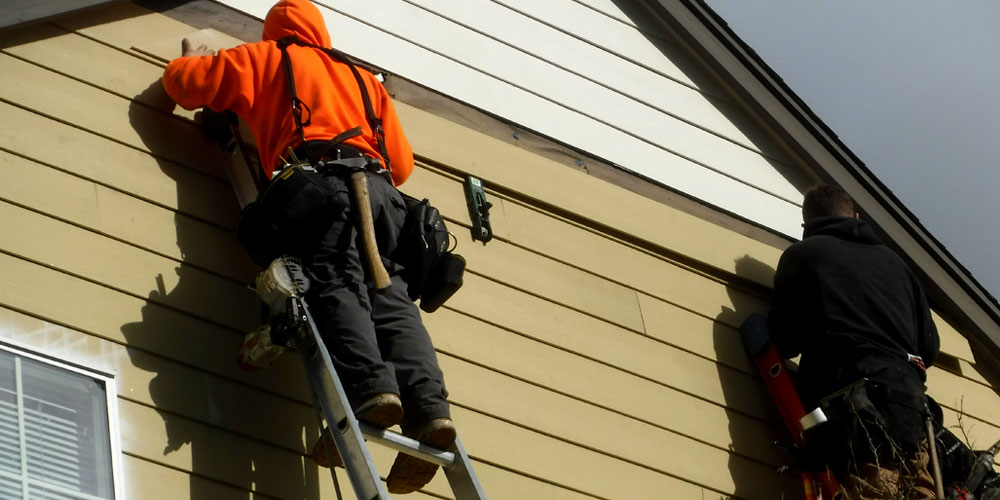Siding does more than just add aesthetic appeal to your home; it acts as a protective barrier against external elements such as rain, snow, and UV rays. When siding becomes damaged or worn out, it compromises its ability to shield your home effectively. Therefore, understanding the importance of siding repair is essential for preserving both the beauty and functionality of your home.
Identifying Signs of Siding Damage
Being able to recognize signs of siding damage early on can help you address issues before they escalate. Keep an eye out for
Peeling or Chipping Paint: This can be an indication of underlying moisture problems or material deterioration.
Soft or Spongy Areas: Touching the siding can reveal areas that have become soft due to water damage or rot.
Visible Holes or Cracks: These can allow pests to enter and may also indicate structural issues.
Increased Energy Bills: Damaged siding can compromise your home's insulation, leading to higher heating and cooling costs.

Image source: Google
Essential Steps for Siding Repair
Effective siding repair requires careful planning and execution. Here are some essential steps to guide you through the process:
Initial Inspection: Conduct a thorough inspection of your home's exterior to identify areas that need attention.
Gather Materials: Ensure you have the necessary tools and replacement siding materials on hand.
Remove Damaged Sections: Carefully remove the damaged siding sections, taking care not to cause further damage.
Install New Siding: Install the new siding panels, ensuring they fit snugly and are properly aligned with the existing siding.
Seal and Protect: Seal all seams and edges with a high-quality sealant to prevent water infiltration. Consider applying a protective finish or paint to enhance durability.
Why Professional Siding Repair Matters
While DIY siding repair may seem tempting, professional assistance offers numerous benefits. Experienced siding contractors possess the skills and knowledge required to handle repairs efficiently, ensuring long-lasting results. Additionally, they can recommend the best materials and techniques tailored to your home's specific needs.
Conclusion
Maintaining your home's siding in good condition is crucial for protecting its structural integrity and enhancing its appearance. By staying vigilant for signs of siding damage and investing in timely repairs, you can ensure that your home remains a safe, comfortable, and beautiful place to live for years to come.

